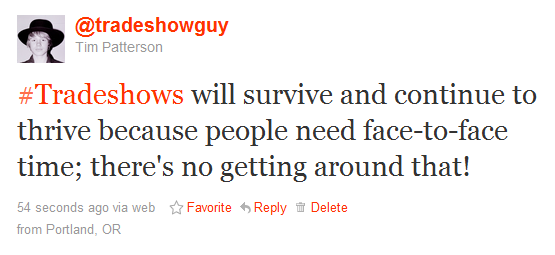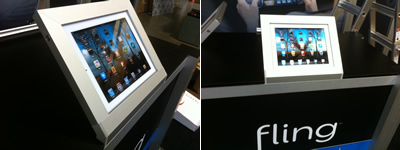Social Media is Critical, Face to Face Still Rules
I suppose I could make the simple point of this whole article and squeeze it into the length of a tweet:

Wow, even shorter than 140 characters!
But of course there’s more to the idea than just a tweet. Tradeshows will continue to thrive. Yes, even in spite of budgetary pressures: increasing travel costs, space rental, booth costs, etc. Those will continue to climb, but companies will still find a way to get necessary people to critical shows.
In a recent blog post on Classic Exhibits’ ‘Trade Show Tales’ Mel White shared some points from a recent Event Design interview with Sue Hoff, director of Global Conventions for Medtronic. She emphasized how important ‘face-to-face’ is in the tradeshow world several times during the interview, and pointed out that while social media has value, it’s not going to replace live events.
In fact, in my view, social media is critical to keeping those live events, well, LIVE, dammit. People love connecting online and they love solidifying that connection with face-to-face gatherings….tweet-ups…meetups…whatever you call them, they’re critical. Social media’s role in live events, while evolving, is critical to making those live events work well. By integrating social media into the live events, organizers and exhibitors will enhance the value of their brand, lift loyalty, and solidify previously tenuous connections.
So keep tweeting. Keep posting on Facebook. Keep creating short videos for your YouTube channel. Keep participating in LinkedIn groups. Your market is there, and you’d better keep working to find and connect with them. Because you know your competitors certainly are!






